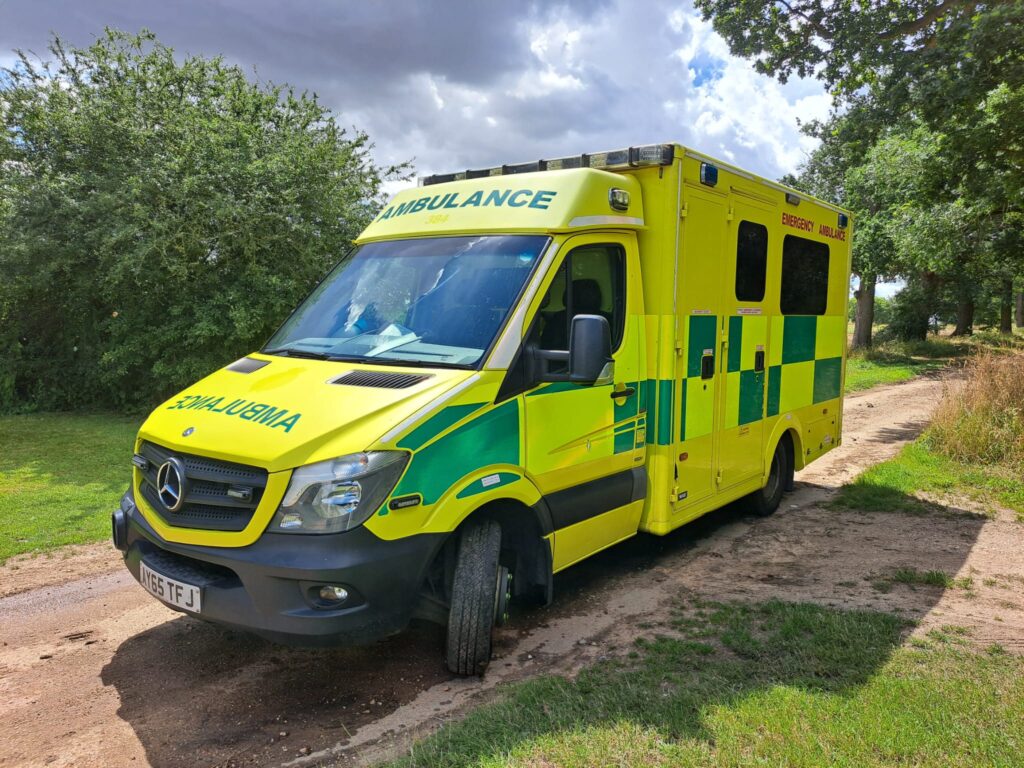FREC Courses
Level 5 Diploma in First Response Emergency and Urgent Care – FREUC 5
Duration
4 weeks + 2 online study days + 750 Clinical Placement Hours
Price
£3550 (inc. VAT and books)
Minimum Age
18 years
About FREUC 5
FREUC 5 qualification is:
- For people who work or hope to work in emergency and urgent care settings who would be expected to undertake clinical assessment, evaluate patients’ conditions and manage traumatically injured and unwell patients prior to referral to the next echelon of care
- Based on clinical skills and competencies at Level F of the prehospital provider competencies FPHC Pre- Hospital Emergency Medicine (PHEM) Skills Framework
- Based on Level 4 Associate Practitioner of the Skills for Health Career Framework
- Resuscitation Council (UK)
- Skill for Health Career Framework
- East Midlands Ambulance Service NHS Trust
- Skills for Health Assessment Principles for Qualifications that Assess Occupational Competence
- The Royal College of Surgeons of Edinburgh – Faculty of Pre-Hospital Care (FPHC)
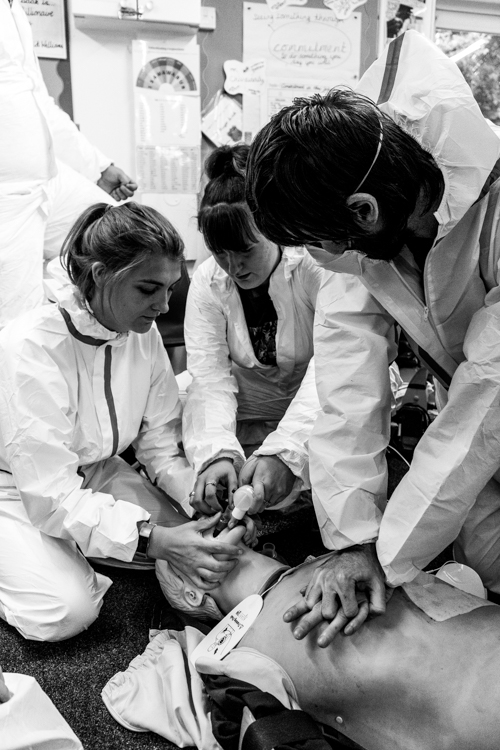
Designed For
Who is the FREUC 5 Designed For?
Ambulance Technicians whose previous qualifications are no more recognized
Emergency Medical Technicians (EMTs with in-house training who wishes to be Nationally recognized)
Advanced Responders
Police Medics
Army Medics
FREC 4 responders
Emergency Care Assistants (ECA) who wish to progress in their career
Course Overview
Who is the FREUC 5 Designed For?
Relationship with other related qualifications
The Qualsafe Level 5 Diploma in First Response Emergency and Urgent Care (RQF) may be transferred to other similar qualifications under Recognition of Prior Learning (RPL) and count towards achievement of such qualifications providing it is achieved within its registration period.
Recognition of Prior Learning
Recognition of Prior Learning (RPL) is a process for recognising any learning undertaken and/or attained by a Learner. The Learner must prove they have met some or all the learning outcomes and/or assessment criteria for this qualification before RPL can be considered.
Designed For
Learning Outcomes for the Level 5 Diploma in First Response Emergency and Urgent Care (FREUC 5)
Component 1
Fundamentals of First Response Emergency and Urgent Care (FREUC5) for associate practitioners
- Understand the role and responsibilities of first response emergency and urgent care associate practitioners
- Understand key concepts of critical thinking and decision making relevant to associate practitioners working in emergency and urgent care settings
- Understand how human factors influence behaviour in the prehospital care environment and the way in which they can affect patient outcome and health and safety
- Understand the importance of clinical debriefing in communication, performance and improving patient safety
- Be able to work effectively with health and social care providers and services that are available to patients requiring emergency and urgent care
- Be able to communicate with service users and others to determine professional opinion, obtain clinical advice and inform clinical decision-making
- Be able to analyse personal performance and review clinical practice
- Be able to conduct research relevant to prehospital care practice
- Be able to develop academic writing skills
- Be able to apply the principles of evidence-based practice in prehospital care
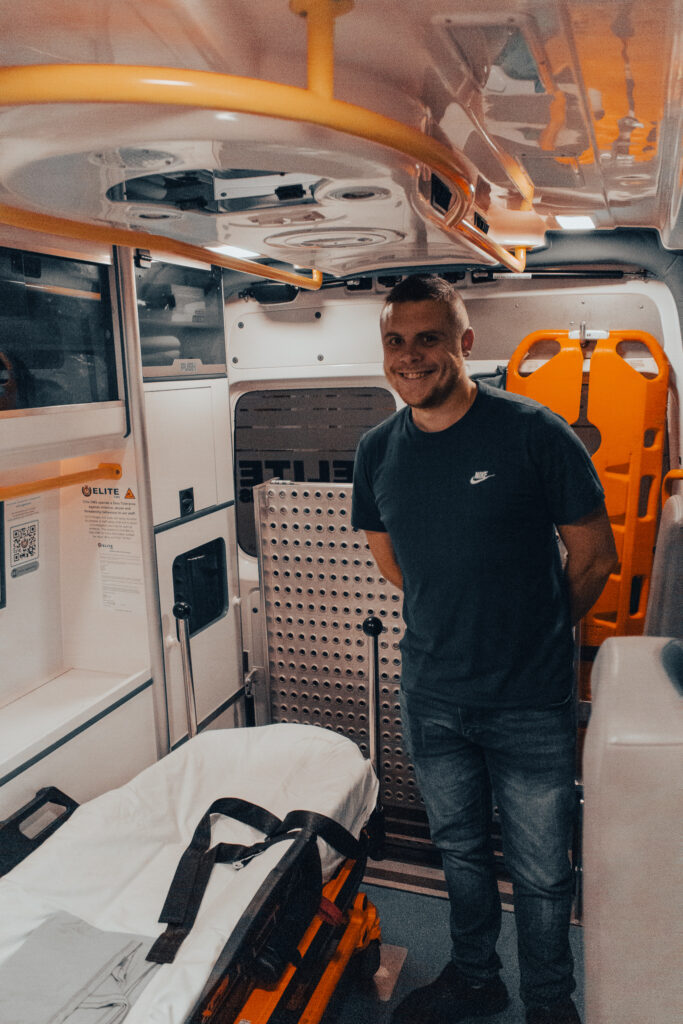
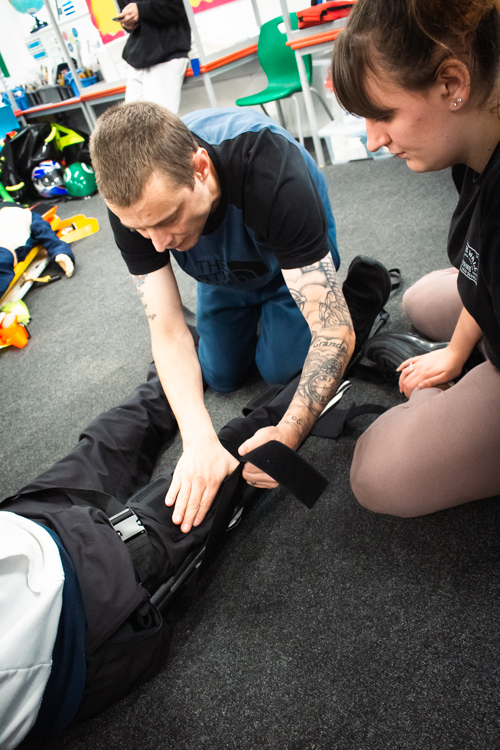
Component 2
Fundamentals of patient assessment, technical and non-technical skills and resuscitation
- Be able to safely use and maintain patient monitoring and life support equipment
- Be able to implement methods and procedures to assess and manage an incident
- Be able to assess, devise a working diagnosis, determine severity of a patient’s condition and presenting illness
- Be able to take a history and perform clinical examinations within scope of practice
- Be able to acquire, monitor and interpret electrocardiogram (ECG) recordings in order to inform treatment decisions
- Be able to assess and manage a patient with chest pain
- Be able to manage a patient’s condition and presenting illness
- Be able to assess, manage and maintain a patient’s airway and monitor patency
- Be able to carry out immediate life support and post-return of spontaneous circulation care
- Understand resuscitation attempt modifications, decision-making processes and procedures
- Be able to assist a clinician performing clinical tasks and procedures
Component 3
Applied anatomy, physiology and pathophysiology
- Understand human anatomy and physiology and the effects diseases and disorders have on the body
- Be able to assess, help devise a working diagnosis, determine severity of a patient’s condition and assist in the management of presenting illness or injuries
- Know how to recognise and manage life-threatening infections
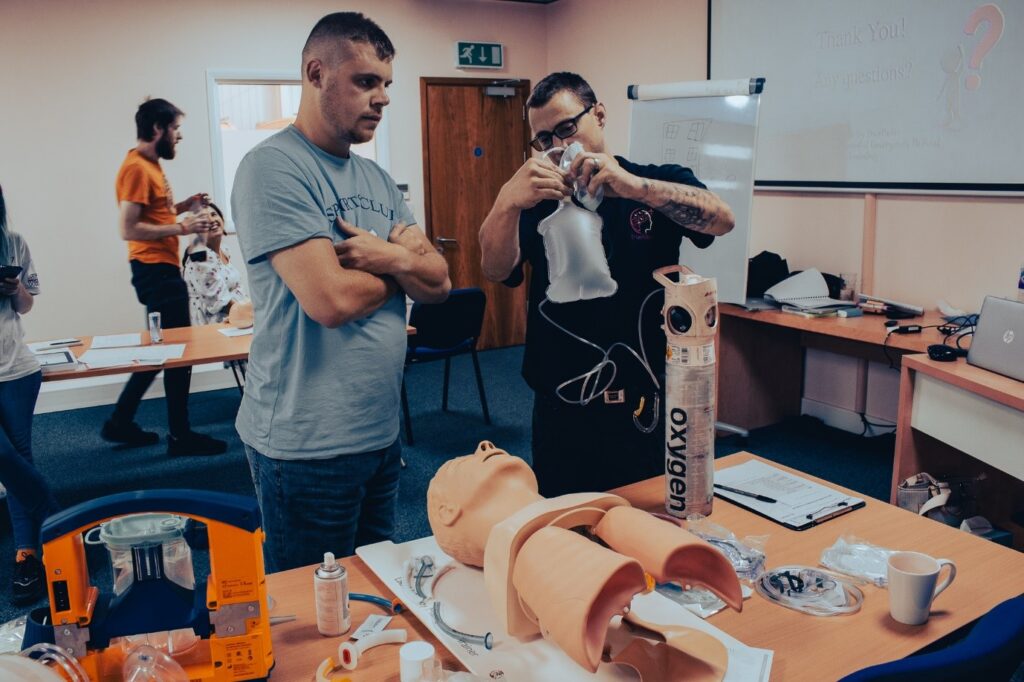
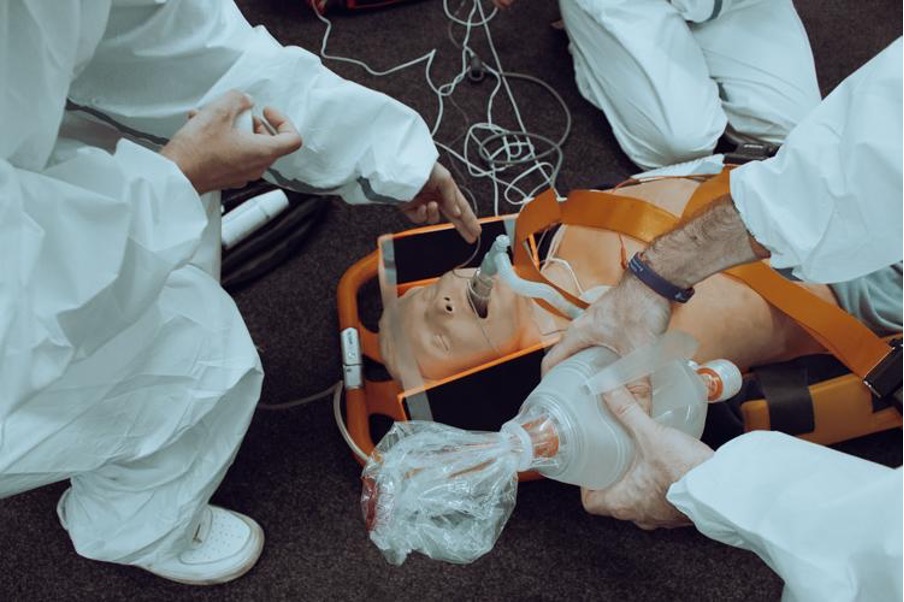
Component 4
Emergency and urgent care for patients with specific needs
- Understand how to assess, manage and access clinical support to provide maternity care
- Understand how to manage complications during childbirth
- Understand obstetrics and gynaecology complications
- Know how to provide patient care and support to patients with medical conditions and service users with specific needs
- Understand how to provide end-of-life care
Component 5
Administration of medical gases and lifesaving medication in emergency and urgent care
- Understand key aspects of administration of medicines legislation
- Be able to determine a patient’s condition in order to distinguish the correct lifesaving medication
- Be able to carry out safety checks prior to medicine administration
- Be able to administer medical gases
- Be able to identify and administer common types of lifesaving medication in an emergency or urgent care situation
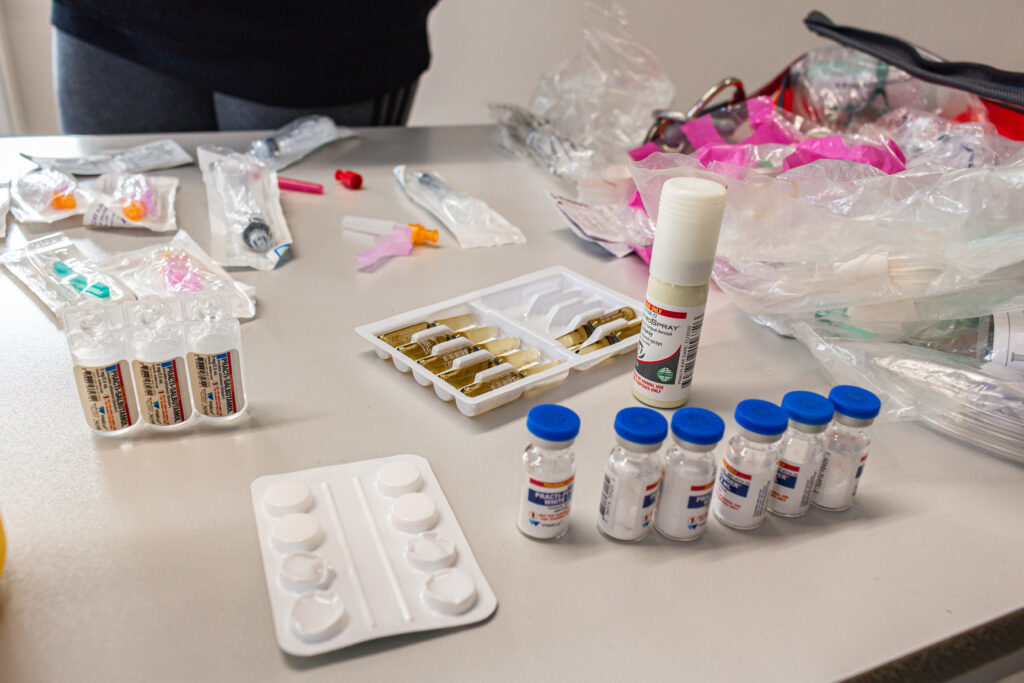
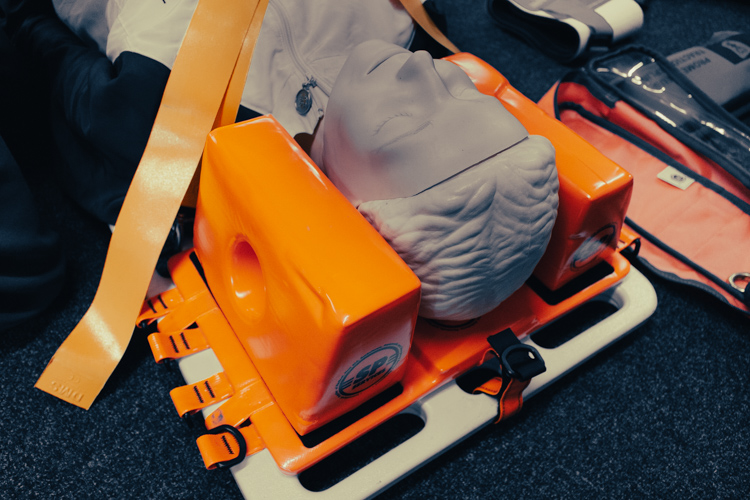
Component 6
Fundamentals of trauma care and major, complex and high-risk incidents preparedness
- Be able to carry out the duties of a first response emergency and urgent care associate practitioner at major, complex and high-risk incidents
- Be able to carry out initial scene assessment and management
- Be able to operate communication equipment for priority communication
- Understand the policies, procedures and protocols relating to major, complex and high-risk incidents
- Be able to implement methods and procedures to assess and manage a prehospital trauma incident
- Be able to assess, devise a working diagnosis, determine severity of a patient’s condition and presenting injuries
- Be able to manage a patient’s condition and presenting injuries
- Know how to manage patients affected by incapacitating agents
Requirements
FREUC 5 – Entry Requirements
- Learners must be at least 18 years old on the first day of the training.
- Learners must have successfully completed the Qualsafe Level 4 Certificate in First Response Emergency Care (QCF/RQF) (FREC4) qualification before they can register on to this qualification.
- Evidence of continuing professional development covering FREC3 and FREC4 content including annual revalidation of Immediate Life Support (ILS).
- Learners must be able to undertake 750 clinical practice placement hours.
- There are no other formal entry requirements but to benefit from the learning we advise that Learners have a minimum of Level 2 in literacy and numeracy or equivalent.
- All Learners must hold Level 3 CERAD qualifications and complete Practice Placements HR process.
Progression
The Qualsafe Level 5 Diploma in First Response Emergency and Urgent Care (RQF) qualification may:
- Be used towards other clinical qualifications at the same and higher levels
- Aid career progression in a relevant profession such as a registered healthcare professional
- Be used as a springboard to become a paramedic. It may also provide a stepping stone into specialist medical roles within the military, emergency services and industry
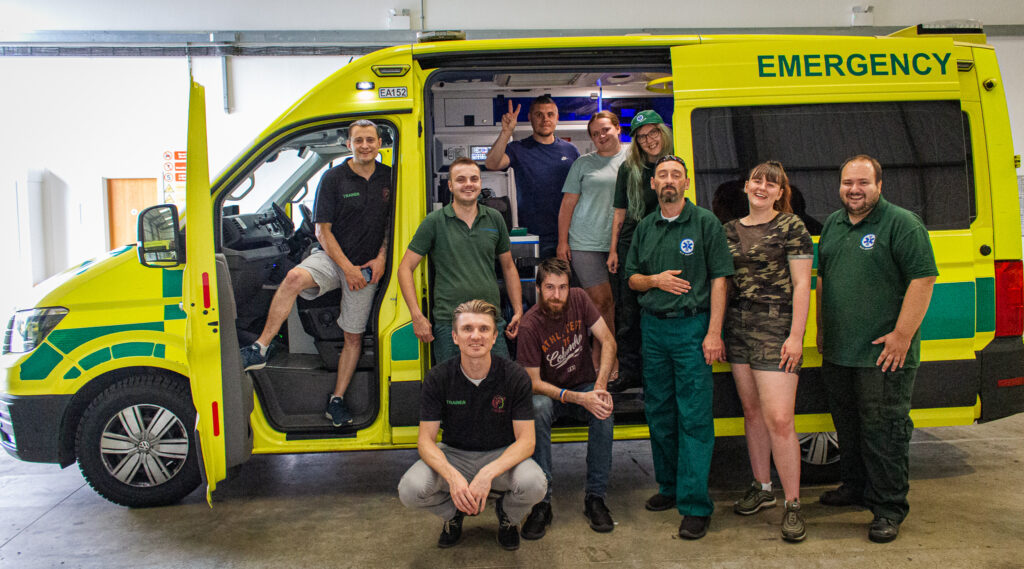
Designed For
FREUC 5 Information
Course Duration
The course spans 20 classroom days and 2 online study days, divided into 4 weeks, followed by 750 hours of placement-based consolidation. It features a low trainer-to-learner ratio and incorporates both theoretical and practical learning.
Course Locations
Primarily held in our new classroom
Unit 9 Brocks Business Park, Wickford, Essex, SS11 8YN
Alternatively there may be occasions when the training is held in - Saint Peter's Church of England Primary School, Brentwood CM14 5QN
Clinical Placement Hours are currently completed by private ambulance service in Devon, Cornwall and across South West region. TrueMedic reserves the right to decide where Clinical Hours will be completed unless the student have their own Clinical Placement Sponsorship in place. and agreed with us.
Awarding Organization and Clinical Endorsements
Regulated by Qualsafe Awards, OFQUAL and CCEA.
Certificate Validity
The FREUC 5 qualification remains valid as long as the learner maintains a CPD portfolio and holds a current Immediate Life Support certification which can be completed with us as well.
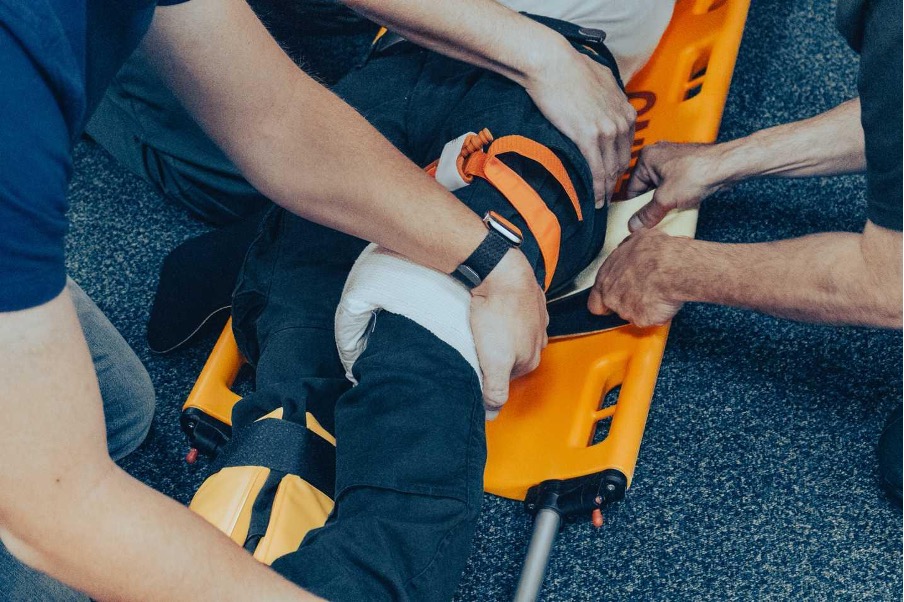
Assessment process
There are 7 OSCES and 1 Skills test for this qualification:
- Major trauma OSCE
- Acute coronary syndrome OSCE
- Immediate life support OSCE
- Acute medical emergency OSCE
- Medical condition OSCE
- Patient assessment OSCE
- Obstetrics and gynaecology OSCE
Theory assessments:
- 1 Learner workbook
- 2 Invigilated exams
- 1 Professional practice portfolio
- 1 Academic portfolio
- 1 Practice assessment document (includes 750 clinical practice placement hours)
